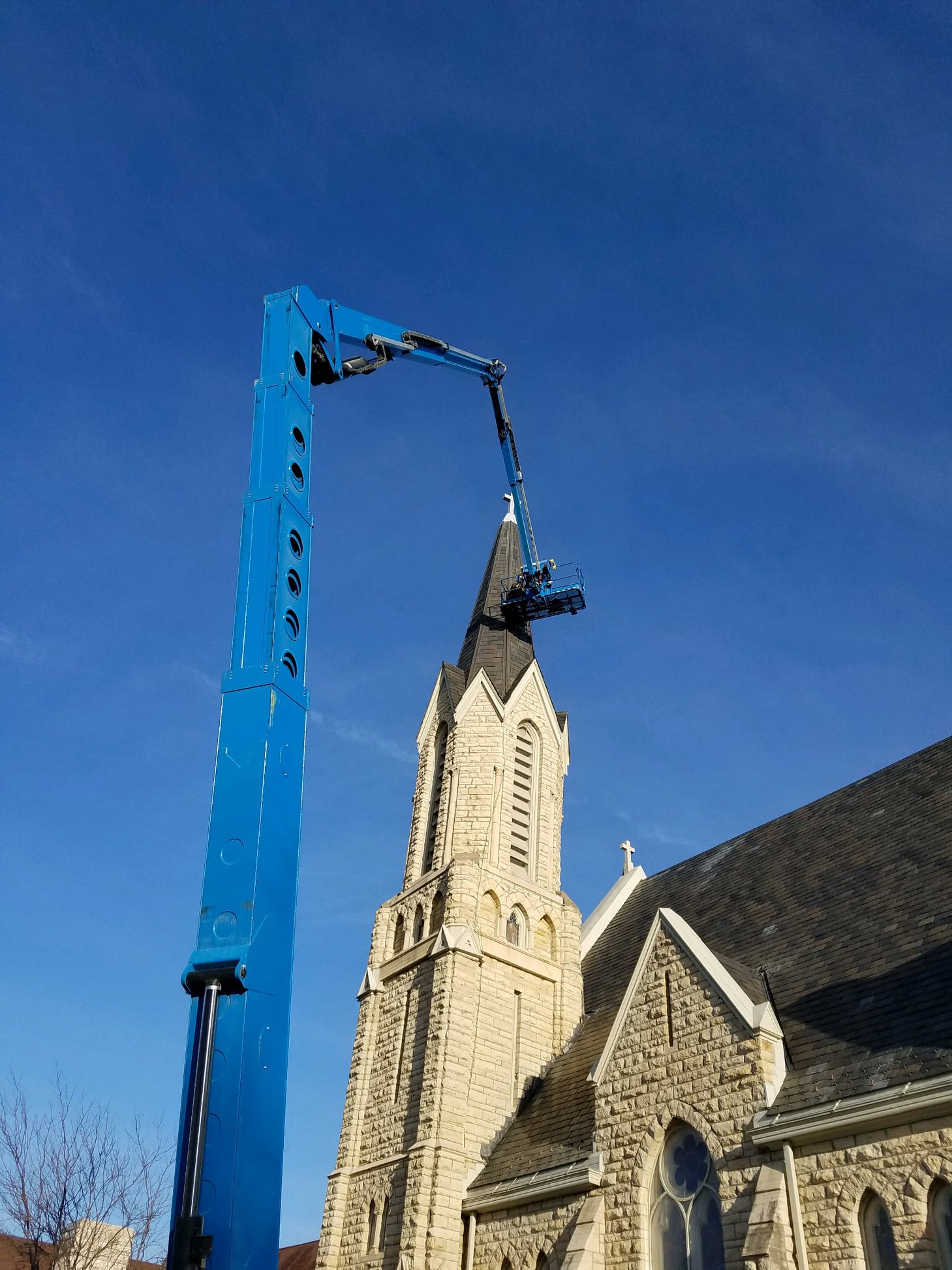

The 98-foot-tall belfry of the St. Patrick Catholic Church at 1312 Third St. in Perry underwent roof repairs Thursday that were made necessary by damage sustained in last summer’s derecho wind storm.
The cornerstone of the church was laid in 1901, the third structure to occupy the grounds at Third and Lucinda streets, which were purchased in 1874. The original wood-frame church was replaced by a red brick structure in 1883.
The Late Gothic Revival style church was designed by George Stauduhar of Rock Island, Illinois, and built by McCavick and Squires of Marshalltown. The original slate roof was replaced with asphalt shingles about 1970 and restored to slate in 2010.
Renovations to the church were made in 1930, 1940, 1954, 1980 and 1999. The church and rectory were listed on the National Register of Historic Places March 22, 2011. The U.S. Department of the Interior’s National Park Service National Register of Historic Places registration describes the belfry:
South of the entrance is the bell tower. Adorning the west side of it is an arrow window similar to and in line with those flanking the main entrance. Above it are two smaller windows, repeating that shape. Above a smooth limestone ledge, on a level with the choir loft windows, is a tall, narrow, rectangular window. Continuing upward, there is a second smooth limestone strip with triangular-shaped end pieces. Above this is a section that contains three small arches, with a Gothic window gracing the center arch. This is repeated on all four sides of the tower. Above this section is an eight-sided tower housing the bell. In the north, south, east and west sides are louver windows that allow the bell to be heard. Topping the limestone are six peaks. A sharply pointed six-sided roof rises from inside these peaks. On top of this roof stands a white cross. At one time, directly below the cross, the roof was edged by crockets.
















